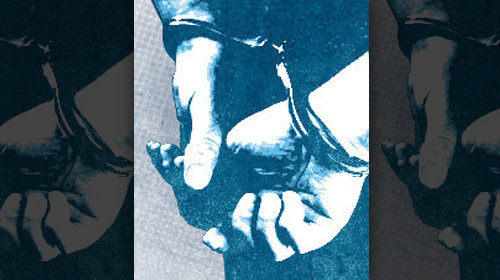
Today, the U.S. has the highest incarceration rate of any country in the world. With over 2.3 million men and women living behind bars, our imprisonment rate is the highest itÔÇÖs ever been in U.S. history. And yet, our criminal justice system has failed on every count: public safety, fairness and cost-effectiveness. Across the country, the criminal justice reform conversation is heating up. Each week, we feature our some of the most exciting and relevant news in overincarceration discourse that weÔÇÖve spotted from the previous week. Check back weekly for our top picks.
Senate Hearing Seeks Ways to Lower Federal Prison Costs, Population
Since 1980, the number of federal prisoners has grown by over 700 percent, and costs have risen even more steeply; for FY2013, the BOP requested an allocation of $6.9 billion. The question is not whether we ought to reduce the size of the federal prison system, but how best to do so. To that end, the Senate Judiciary Committee held a hearing on August 1 to consider the testimony of experts on ideas for safely reducing the number of federal prisoners. The hearing is . Notable testimony came from , who stated that ÔÇ£mass arrest and strict prosecution will not workÔÇØ to control drug abuse, and highlighted the successes of drug courts and treatment in reducing recidivism. called our ÔÇ£unsustainable prison growthÔǪa looming threat to public safetyÔÇØ, and decried long sentences for federal drug offenders. The └¤░─├┼┐¬¢▒¢ß╣¹ also submitted written testimony, in which it called for Congress to emulate the bipartisan reform successes of several states.
A More Cost-Effective Way for the Bureau of Prisons to Release Elderly Prisoners
The federal Bureau of Prisons (BOP) recently conducted a two-year pilot program in which it placed eligible elderly prisoners on home detention (which includes detention in a nursing home or other residential long-term care facility) until the end of their prison terms. In December 2011, the BOP reported to Congress on the results of the program (the Elderly and Family Reunification for Certain Non-Violent Offenders Pilot Program). According to the BOP, the pilot achieved no cost-savings and actually imposed an additional $540,631 of costs above what would have been spent to incarcerate these inmates in BOP facilities. The GAO , but no matter the bottom line, the BOP should explore most cost-effective means of releasing elderly prisoners. As the article above explains, the objective should be to get aging prisoners out of the prison system altogether, and not simply to re-imprison them in a secured nursing home or other facility, which may or may not be less costly than minimum-or-low-security prison facilities.
The final bill signed by Gov. Patrick denies parole to some people convicted of a third felony, but also granted parole eligibility for hundreds of prisoners convicted of drug offenses. Additionally, the bill reduced mandatory minimum sentences for some drug offenses and reduced the ÔÇ£school zoneÔÇØ for drug offenses (and area in which enhanced penalties apply) from 1,000 to 300 feet, which could reduce school zone enhancements by as much as . Moreover, Gov. PatrickÔÇÖs signature came after legislative leaders they would try to reduce strict sentencing rules for certain drug crimes when the new legislative session begins in January.
Although nearly half of the 400,000 immigrants detained annually are housed in private facilities, the federal government ÔÇö which spends $2 billion a year on keeping those people in custody ÔÇö says it isn't necessarily cheaper to outsource the work, which is of course the central argument for prison privatization. If cost-effectiveness canÔÇÖt explain the popularity of private immigration detention facilities, what can? Political influence probably has much to do with it; the three largest private prison companies have spent at least $45 million combined on campaign donations and lobbyists at the state and federal level in the last decade. For more, read The Sentencing ProjectÔÇÖs on for-profit detention.
Uruguayan President Jose Mujica has proposed a plan not just to legalize marijuana, but to establish a government monopoly of marijuana sales. Personal marijuana use is already decriminalized in Uruguay. Uruguay is not the only Latin American country to controlling drug use and sale; decriminalization of marijuana and other drugs is also being considered by the heads of Guatemala, Colombia, Brazil, and Argentina.
Learn more about overincarceration: Sign up for breaking news alerts, , and .
